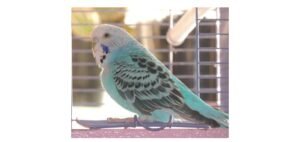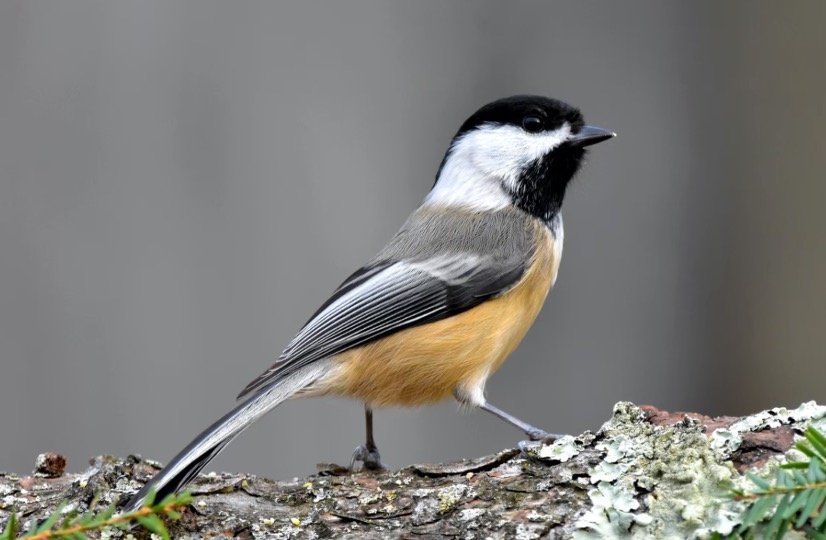
The chickadee is an omnivorous creature belonging to the Animalia family, phylum Chordata, class Aves, order Passeriformes, and family Paridae. Its length is about 3 inches and it weighs about 0.3 to 0.4 oz. It has a wingspan of 6 to 8 inches and a lifetime of up to 3 years.
A chickadee is a bird that feeds on insects, and seeds. The “cap” of dark feathers on the head is the most distinguishing characteristic.
Chickadees are preyed upon by birds of prey. Physical features include grey, black, and white skin colorations, and feathers on skin, with a potential flying speed of 12 mph.
Chickadee Description
Chickadees are named for their plumage, their habitat, and their warning song or cry. Chickadees are a common feeder bird in North America. They make “fee-bee” and “chick-a-dee-dee-dee.”
The stunning black and white markings on these sociable birds make them instantly identifiable. The differences between the species are slight.
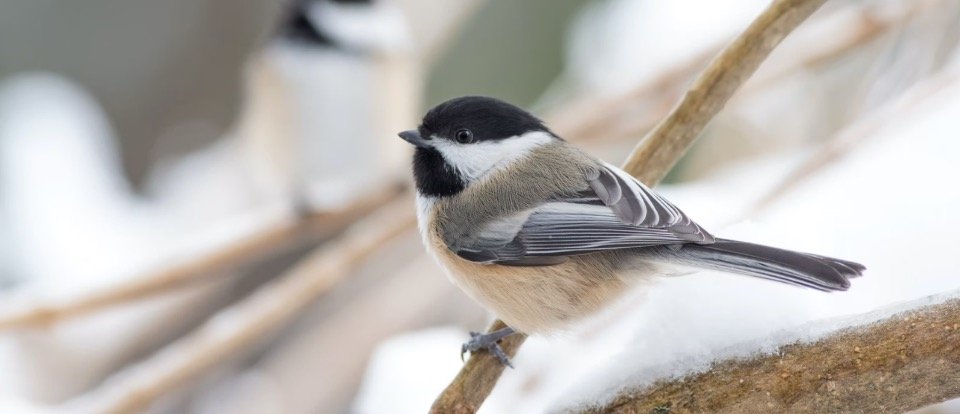
These birds may be found from the east coast to the west coast of North America, and from Canada to northern Mexico. Although mixed deciduous and coniferous woods are their preferred environment, they have adapted well to parks and suburbs.
The Carolina chickadee lives in the southeastern United States, whereas the black-capped chickadee lives in southern Canada and northern America.
Mountain chickadees can be found from the Rocky Mountains to the Pacific Coast. In Canada, boreal chickadees live in the north, whereas chestnut-backed chickadees live on the Pacific coast.
Arizona and New Mexico are home to the Mexican chickadee. The grey-headed chickadee is a holarctic species, which means it may be found all across the world’s northern continents. These birds might be attracted to your own property.
They will come every day if you put out a seed feeder. You may also hang a birdhouse from a tree to entice them to build a nest nearby. These birds build their nests in cavities.
They like to make nests in tree holes or similar structures that are 10 to 15 feet off the ground, such as birdhouses. Frequently, partners may excavate numerous prospective nest locations before settling on one.
They make a nest of moss and soft materials over the course of many days in the soft, decaying wood of the tree. Each year, the nesting season lasts from April through June. While precise numbers of black-capped, Carolina, boreal, and some other chickadee species are unknown, recent backyard bird surveys show that their populations are increasing.
The West Nile virus caused a drop in the population in the early 2000s, but it has since recovered. The bird’s conservation status is unclear or unlisted; it is not officially considered a threatened species.
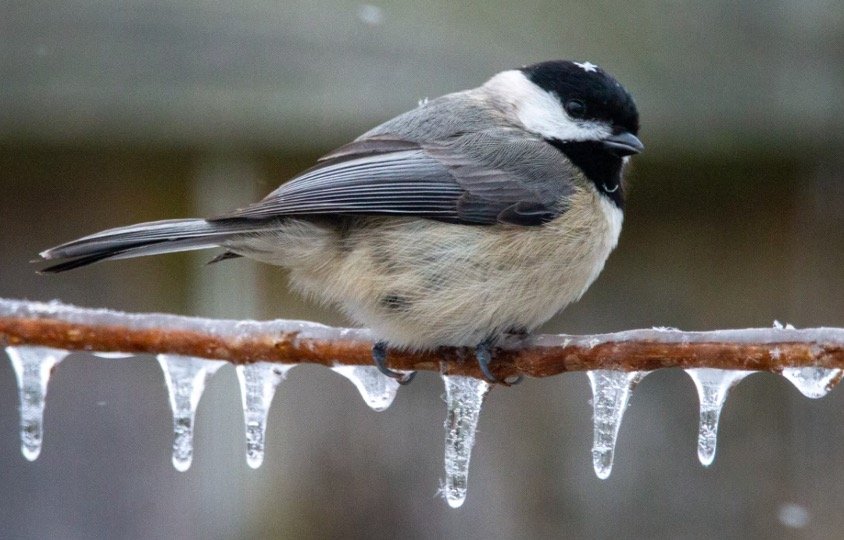
Fun Facts About Chickadee!
• These birds’ warning cry is “chick-a-dee-dee-dee-dee-dee-dee-dee-dee-dee-dee-dee-dee-dee-dee-dee-dee Their standard tune is pronounced “fee-bee.”
• The predator is identified by the number of “dees” in the alarm cry. Other bird species are aware of the significance as well.
• Both North America and Eurasia are home to the grey-headed chickadee. It is known as the Siberian tit in the latter.
• These birds, unlike many other birds, will not re-use an old nest. They construct a new one for each brood, which can be up to two every year.
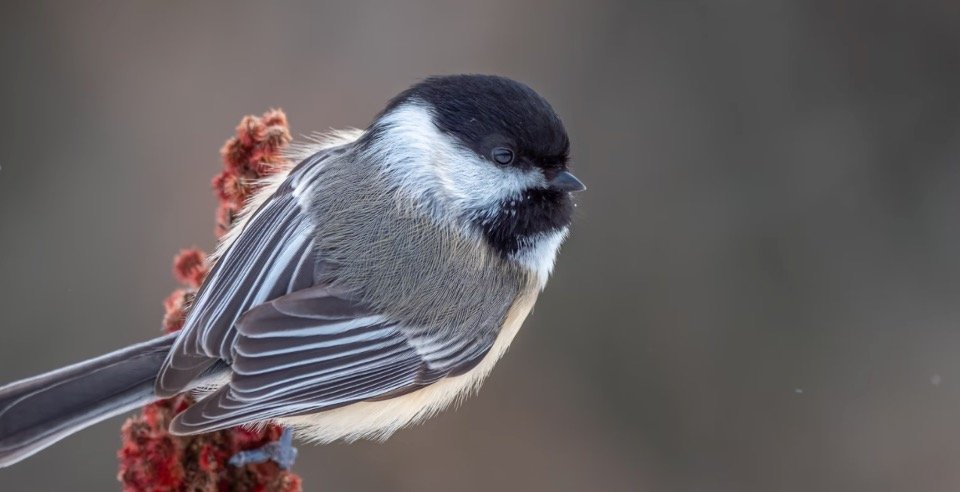
Various Chickadee Species
These birds are found in North America in seven different species. They are members of the family Paridae, order Passeriformes, and the genus Poecile. In Europe, there are additional representatives of this genus with similar appearances.
They are named tits or titmice instead of chickadees there. Black-capped chickadees (Poecile atricapillus), Boreal chickadees (Poecile hudsonicus), Carolina chickadees (Poecile carolinensis), Chestnut-backed chickadees (Poecile rufescens), Grey-headed chickadees (Poecile cinctus), Mexican chickadees (Poecile sclateri) and Mountain chickadees (Poecile gambeli) are a few regular species names of chickadees. The genus Poecile has eight tits in addition to the 7 species, for a total of fifteen species.
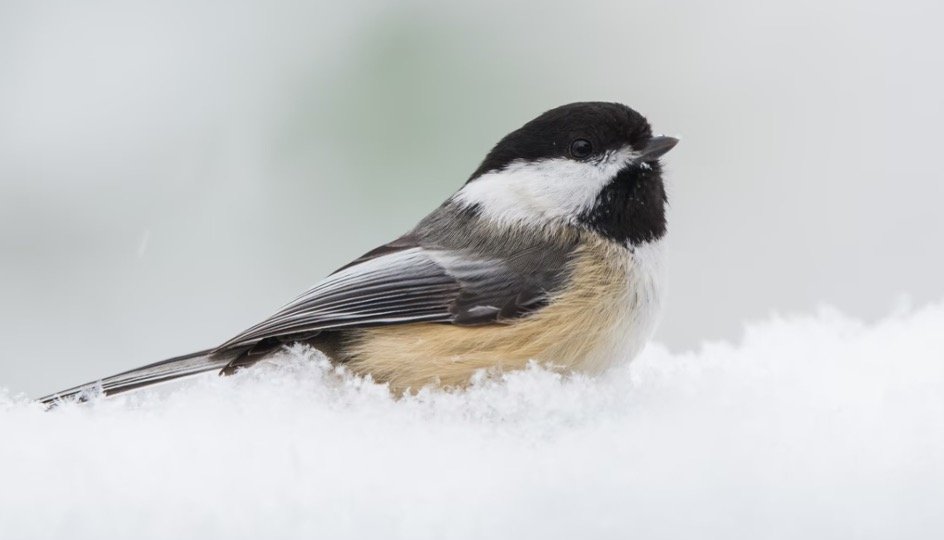
Chickadee Appearance and Behavior
Grey colouring with black and sometimes rose patterns distinguishes all of the species. The black-capped chickadee is amongst the most common species. It has a black hat and bib, for which it is named, and is 5 inches (12 cm) in length.
The chestnut-backed chickadee, for example, has strong reddish-brown markings. The tiniest measures only 2.4 inches (6 cm) in length. These birds congregate in tiny groups during the autumn and winter months of August to February.
Other species, such as downy woodpeckers, nuthatches, and tufted titmice, might be among them. As the spring season approaches, couples separate from their flocks to mate and raise their offspring.
These birds do not migrate and spend the entire year around their nesting sites. In cold weather, these birds keep their bodies warm by fluffing their feathers and limiting blood flow to the skin.
They survive extremely cold nights by going into torpor, a sort of suspended animation in which the metabolism slows and the body temperature decreases by roughly 10 degrees. Whenever the temperature rises, the “frozen” birds awaken.
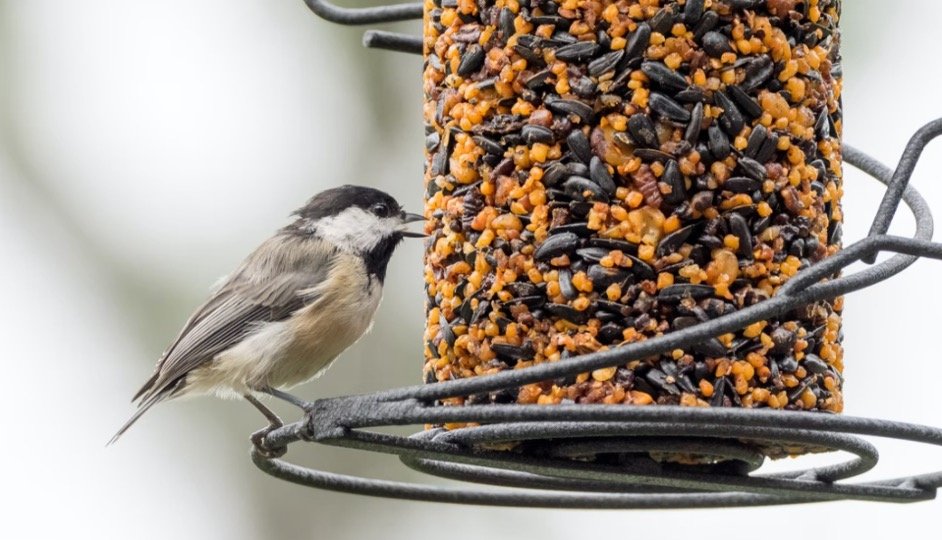
What Do Chickadee Eat?
These birds are a good bet for your birdfeeder because of their nutrition. They frequently take turns eating one at a time at a feeder. They also use caches, which involves storing food in cracks or under branches.
They have up to a month to return to it. These birds frequently form “bird guilds,” feeding with several other species in a flock. Because they all forage for food in various ways, these birds get along.
When a nice morsel is discovered, the chickadees in the flock become delighted and focus their attention on that place. Seeds, insects, and berries are the favourites of these birds. They also eat bug larvae and eggs throughout the breeding season. Insect protein accounts for 50-80% of their diet.
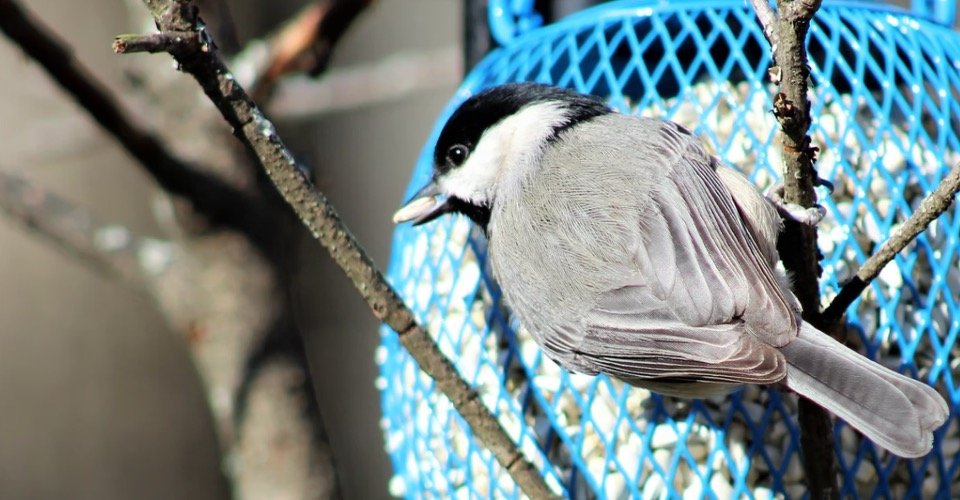
Chickadee Predators and Threats
They must keep an eye out for predators from above, like a little bird. Shrikes, hawks, and owls are among them. Tree-climbing animals such as cats and raccoons pose the greatest threat to eggs and young birds. Snakes might also be a threat.
Predators are deterred by the fact that these birds prepare many nest locations. If a predator discovers their nest, they will build a new one a long way away. Adults are more likely to be hunted by birds of prey. Another prevalent predator is cats.

Chickadee Reproduction, Babies, and Lifespan
Males would seek to drive competing males from their area, despite the fact that these birds do not have extensive mating rituals. The female lays six to eight white, speckled eggs after deciding on a nesting place.
While the male delivers her food, she incubates the eggs for roughly 12 days. The mother will continue to warm the young for several days after they hatch. The young are fed by both the male and female birds, and they leave the nest after 16 days.
Only 20% of chickadee chicks make it through their first year. The average lifespan of these birds is two to three years, although they can live considerably longer. In 2011, a bird that had been banded nine years before was recovered.
When it was banded, it was assumed to be two years old, but it lived to be eleven and a half years old.






